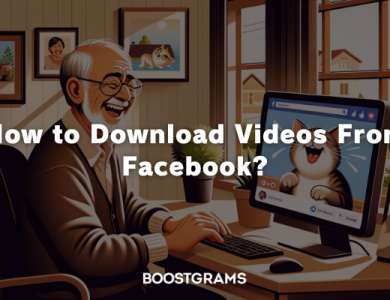Boost Your Facebook Engagement with Call to Actions!

Are you struggling to increase engagement on your Facebook posts? One effective way to boost engagement is by using call to action examples on Facebook. A call to action (CTA) is a prompt that encourages users to take a specific action, such as liking, commenting, or sharing your post. In this article, we will explore different ways to use call to action on Facebook and provide you with some examples that you can implement to increase your engagement.
Contents
- 1 Effective ways to use call to action on Facebook
- 2 How to create compelling call to action buttons on Facebook
- 3 Best practices for using call to action in Facebook ads
- 4 Increase conversions with call to action on your Facebook page
- 5 Engage your audience with creative call to action examples on Facebook
- 6 Call to action strategies for maximizing reach on Facebook
- 7 FAQs about call to action examples on Facebook
- 7.1 Q: How do I create a call to action button on my Facebook page?
- 7.2 Q: How can I track the effectiveness of my call to action on Facebook?
- 7.3 Q: Can I use call to action examples on Facebook for organic posts only, or can I also use them in paid ads?
- 7.4 Q: How often should I use call to action examples on Facebook?
- 8 Expert Advice
Effective ways to use call to action on Facebook
- Use clear and concise language: When creating your call to action, it is important to use clear and concise language that clearly communicates what you want your audience to do. Avoid using vague or ambiguous language that may confuse your audience.
- Place your call to action strategically: The placement of your call to action is crucial. It should be prominently displayed and easily noticeable within your post. Consider placing it at the end of your post or within the caption to ensure that it catches the attention of your audience.
- Use eye-catching visuals: Visuals can significantly enhance the effectiveness of your call to action. Incorporate eye-catching images or videos that grab the attention of your audience and compel them to take action.
- Offer incentives: To further encourage your audience to take action, consider offering incentives such as exclusive discounts, freebies, or giveaways. These incentives can motivate your audience and increase their willingness to engage with your post.
- Experiment with different call to action formats: Test different call to action formats to see which ones resonate best with your audience. You can try using direct commands, questions, or even storytelling techniques to capture your audience’s interest and prompt them to engage.
Using these effective ways to implement call to action on Facebook can significantly improve your engagement rates and drive more interactions with your posts.
- Choose the right button for your objective: Facebook offers a variety of call to action buttons that you can add to your posts or ads. Select the button that aligns with your objective and encourages the desired action from your audience. Some popular options include “Learn More,” “Shop Now,” “Sign Up,” and “Download.”
- Use enticing copy: The text accompanying your call to action button should be compelling and persuasive. Clearly communicate the value or benefit your audience will receive by clicking the button. Use action-oriented words that create a sense of urgency or excitement.
- Customize the button appearance: Facebook allows you to customize the appearance of your call to action button to match your branding. Choose a color that stands out and complements your post or ad. Additionally, consider adding an arrow or other visual cues to draw attention to the button.
- Test different button placements: Facebook offers various placements for call to action buttons, including in-feed, carousel, and page post ads. Experiment with different placements to determine which one generates the highest engagement for your specific content and target audience.
By following these steps, you can create compelling call to action buttons on Facebook that entice your audience to take action.
Best practices for using call to action in Facebook ads
- Use a strong headline: The headline of your Facebook ad should grab the attention of your audience and clearly communicate the value proposition. Incorporate your call to action within the headline to entice users to click on your ad.
- Create a sense of urgency: Urgency can significantly increase the click-through rate of your Facebook ads. Incorporate phrases such as “limited time offer” or “act now” to create a sense of urgency and prompt immediate action from your audience.
- Leverage social proof: Including social proof, such as testimonials or user reviews, can boost the credibility of your call to action and increase the likelihood of conversions. Highlight positive feedback from satisfied customers to build trust and encourage others to take action.
- Optimize for mobile: A significant portion of Facebook users access the platform through their mobile devices. Ensure that your call to action is mobile-friendly and easily clickable on small screens. Test your ads across different devices to guarantee a seamless user experience.
By implementing these best practices, you can maximize the effectiveness of your call to action in Facebook ads and drive higher conversions.

Increase conversions with call to action on your Facebook page
- Pin your most important call to action post: Facebook allows you to pin a post to the top of your page’s timeline. Pin your most important call to action post to ensure that it remains visible to all visitors of your page. This can increase the chances of conversions as it will be one of the first posts your audience sees.
- Use a compelling cover photo: Your Facebook page’s cover photo is prime real estate for showcasing your call to action. Incorporate your call to action within the cover photo design or include a caption that directs visitors to take a specific action.
- Create dedicated landing pages: When directing users from your Facebook page to an external website or landing page, ensure that the landing page is optimized for conversions. Remove distractions and provide a clear path for users to complete the desired action.
- Regularly update your call to action posts: Keep your call to action posts fresh and relevant by regularly updating them with new content or offers. This will maintain the interest of your audience and encourage repeat conversions.
Implementing these strategies on your Facebook page can significantly increase conversions and drive more actions from your audience.
Engage your audience with creative call to action examples on Facebook
- “Comment below with your favorite emoji!”: Encourage your audience to engage by asking them to comment with their favorite emoji. This simple call to action sparks a fun and light-hearted conversation.
- “Tag a friend who needs to see this!”: Promote engagement and expand your reach by encouraging your audience to tag friends who would be interested in your post. This call to action leverages the power of social connections to increase engagement.
- “Share your success story in the comments!”: Encourage your audience to share their success stories related to your product or service. This call to action not only generates engagement but also serves as valuable social proof for potential customers.
- “Click the link to claim your exclusive discount!”: Drive conversions by offering an exclusive discount and prompting your audience to click on the link to claim it. This call to action combines the allure of a discount with a clear instruction to take action.
By incorporating these creative call to action examples on Facebook, you can captivate your audience and encourage meaningful interactions.
Call to action strategies for maximizing reach on Facebook
- Boost your posts: Utilize Facebook’s post boosting feature to extend the reach of your call to action posts. Set a budget and target audience to ensure your post reaches the right people who are more likely to engage with your call to action.
- Collaborate with influencers: Partnering with influencers in your niche can significantly increase the visibility of your call to action. These influencers have established audiences who trust their recommendations, making them powerful advocates for your call to action.
- Run Facebook contests or giveaways: Contests and giveaways are highly effective in generating engagement and expanding your reach. Encourage participants to engage with your call to action as a requirement for entry, such as liking, commenting, or sharing your post.
- Utilize Facebook Live: Facebook Live videos tend to receive higher reach and engagement compared to regular posts. Incorporate your call to action within your live video and encourage viewers to take action by leaving comments or visiting a specific URL.
By implementing these call to action strategies, you can maximize the reach of your Facebook posts and increase engagement with your target audience.
FAQs about call to action examples on Facebook
A: To create a call to action button on your Facebook page, follow these steps:
- Go to your Facebook page.
- Click on the “+ Add a Button” button below your cover photo.
- Select the desired button type, such as “Shop with You” or “Contact You.”
- Enter the destination URL where users will be directed when they click the button.
- Click “Create” to add the call to action button to your page.
Q: How can I track the effectiveness of my call to action on Facebook?
A: Facebook provides insights and analytics that allow you to track the performance of your call to action. You can monitor metrics such as engagement, clicks, and conversions to assess the effectiveness of your call to action and make any necessary adjustments to improve your results.
Q: Can I use call to action examples on Facebook for organic posts only, or can I also use them in paid ads?
A: You can use call to action examples on both organic posts and paid ads on Facebook. In fact, incorporating a clear call to action in your paid ads can significantly improve their performance and increase conversions.
Q: How often should I use call to action examples on Facebook?
A: The frequency of using call to action examples on Facebook depends on your overall content strategy and goals. It is recommended to use call to action examples regularly to prompt engagement and drive desired actions from your audience. However, be mindful not to overuse them, as it may come across as too pushy or sales-oriented.
Expert Advice
When it comes to using call to action examples on Facebook, it’s important to understand your audience and tailor your approach accordingly. Experiment with different types of call to action and analyze the results to determine what works best for your specific audience. Remember to always provide clear instructions and make it as easy as possible for your audience to take the desired action.



